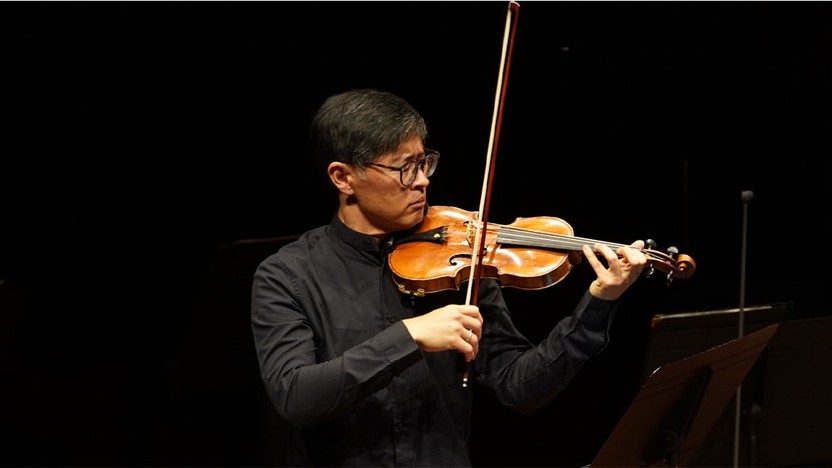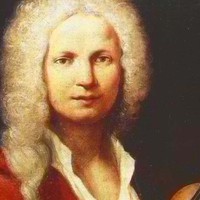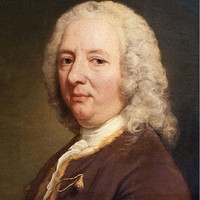EXPRESS CONCERT: Kyu-Young Kim Plays Vivaldi’s The Four Seasons



Carl Philipp Emanuel Bach was the second surviving son of Johann Sebastian Bach, and the godson of Telemann. After studying in his native Leipzig, C.P.E. Bach secured his first major job in 1738 with the prince-elector of Brandenburg, who was soon crowned King Frederick II of Prussia. Bach mainly served as a harpsichordist—including frequent chamber music sessions with the multi-talented “Frederick the Great” on flute—but those responsibilities dropped off sharply with the start of the Seven Years War in 1756. Bach used that time to cultivate private patrons, and the symphonies he wrote in the next several years would have been useful fare for entertaining aristocrats.
Bach wrote this Sinfonia in E Minor amid a sea change in musical style: The ornate polyphony practiced by his father and godfather was falling out of fashion, supplanted by clean lines and crisp contrasts. (This transformation touched all art forms, like how the decadent palaces and cathedrals typical of Baroque architecture gave way to the ordered columns and precise proportions inspired by Classical Greece.) Borrowing the three-part structure of an opera overture—Sinfonia, in Italian—Bach laid the groundwork for the symphony as we know it today.
This minor-key Sinfonia exemplifies the “sensitive style” (empfindsamer Stil) associated with C.P.E. Bach. The fast first movement encompasses a wide range of strongly-felt and clearly delineated emotions, from nervous unisons to joyous swoops, a sound made all the more impactful when Bach later added flutes, oboes and horns. The central slow movement weaves lovely fluid melodies, and again the architecture is open and transparent, the contrasting sections set off by full stops. There are ample details in the dancelike finale that show Bach’s lasting debt to the orchestral suites crafted by his father, although the jokey delay on an unresolved dissonance is a thoroughly modern touch.
Aaron Grad ©2017
 Watch Video
Watch Video
Antonio Vivaldi composed at least 230 violin concertos, many of them originating at the Ospedale della Pietà in Venice. He taught violin and directed an orchestra for the “orphaned” girls there, who were actually the illegitimate offspring of Venice’s upper crust — which explains why their school was endowed with such excellent music instruction.
In 1725, Vivaldi’s publisher in Amsterdam released a set of twelve violin concertos under the title Il cimento dell’armonia e dell’invenzione (The Contest Between Harmony and Invention). Vivaldi named the first four concertos after the seasons, and he organized the musical ideas to correspond to descriptive sonnets. These interrelated works that we know simply as The Four Seasons live on as the crown jewels within Vivaldi’s incomparable catalog of solo concertos.
The sonnets offered Vivaldi ample opportunities for word painting, as in the “birds in joyous song” in the first movement of Spring, represented by trilling violin motives, countered later by thunder and lightning. The docile slow movement depicts a goatherd napping in a meadow, with the violas assigned the part of his barking dog. The finale introduces nymphs and shepherds dancing to bagpipes, a sound evoked in the droning accompaniments.
Summer brings the “heat of the burning sun,” matched by wilting musical figures. The soloist enters in the style of a cuckoo, with the distinctive two-note call embedded within constant bow-strokes. The arrival of a stiff wind from the north, bringing a squall, sends the movement into an agitated state. The slow movement depicts another nap, this one interrupted by the nuisance of gnats and flies and occasional peals of thunder. The finale unleashes the full force of the summer storm, the lines cascading down like sheets of rain.
Autumn begins with peasants dancing and drinking in celebration of the harvest, until they all settle into an inebriated slumber. The slow movement descends into the soundest sleep yet, with the soloist joining the muted strings in slow-moving phrases, leaving only the harpsichord to decorate the harmonies with ad libitum (improvised) arpeggios. The finale wakes for a hunt, complete with imitations of hunting horns and barking dogs.
Winter paints a scene of desolate cold and chattering teeth. The slow movement moves the scene to a cozy fire inside, while pizzicato raindrops continue to fall outside. Starting with hesitant, slippery steps on the ice, the finale builds to raging gusts of wind.
Aaron Grad ©2021

Our Express Concerts are 60-75 minutes of music without intermission. Learn more at thespco.org/express.
Get driving directions and find nearby parking.
Find dining options close to the venue.
View seating charts to find out where you'll be seating.
Get driving directions and find nearby parking.
Find dining options close to the venue.
View seating charts to find out where you'll be seating.
